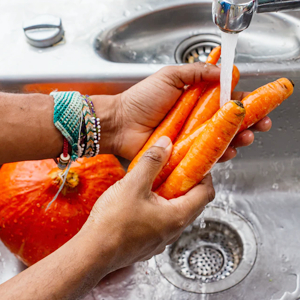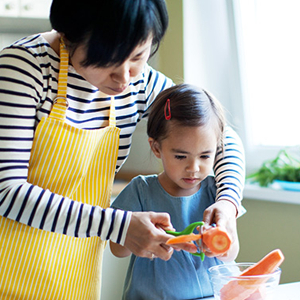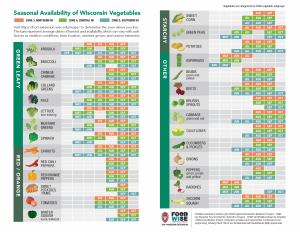
Nutritious, Delicious, Wisconsin!
Wisconsin Harvest of the Month is a statewide campaign that encourages kids and families to eat more fruits and vegetables. Each month schools showcase one seasonal, Wisconsin-grown fruit or vegetable. Students taste, explore, and learn about the importance of eating fruits and vegetables.
Take Our Survey!
Please take a few moments to complete the brief survey below about fruits and vegetables grown in Wisconsin. The first 10 people to successfully complete the survey will receive a $20 electronic gift card. All responses are confidential and will be used to improve the information we share in the future.
Seasonal Availability of Wisconsin Vegetables
Storing and Keeping Fresh Fruits and Vegetables
Make the most of the delicious Wisconsin produce.
Follow these tips to keep fresh fruits and vegetables safe for eating:

- Wash hands with soap and warm water for 20 seconds before and after handling produce.
- Wash all surfaces and utensils (cutting boards, counter tops, knives, etc.) with hot water and soap before and after preparing fruits and vegetables.
- Rinse all fresh fruits and vegetables under cool running tap water, even those with skins and rinds that are not eaten.
- Rub or scrub firm-skinned fruits and vegetables with a clean vegetable brush while rinsing under running tap water.
- Never use dish soap or bleach to wash fruits and vegetables.
- Store fresh fruits and vegetables separate from eggs, raw meat, poultry, or seafood in the refrigerator.
Make Meals and Memories with Kids in the Kitchen
Your children are more likely to eat fruits and vegetables if you serve them often for meals and snacks. Sometimes liking new foods takes time. Try these tips to encourage your children to choose and eat more fruits and vegetables.

1. Let your kids be produce pickers.
At the market, let them help choose fruits and vegetables. Point out various kinds of fruits and vegetables. Discuss your favorites. Talk about the colors and textures. Let your child pick out something new.
2. Let children help cook.
Even very young children can help in the kitchen. They can wash berries, tear lettuce, remove the silk from corn, scrub potatoes with a brush and more. If you let children help, they are more likely to eat what you prepare.
3. Eat together.
Make mealtime fun and relaxed. Turn off TVs and cell phones and talk during mealtime. Try new fruits and vegetables together.
4. Be a healthy role model.
Your kids learn from watching you. Eat fruits and vegetables for meals and snacks and your kids will, too.
5. Surround your child with healthy choices.
If you give a child the option between an apple or a candy bar, most will choose a candy bar. But if the choice is between an apple and a peach, the child will choose an apple or a peach. Both are great options!

Recipes to make with your kids















